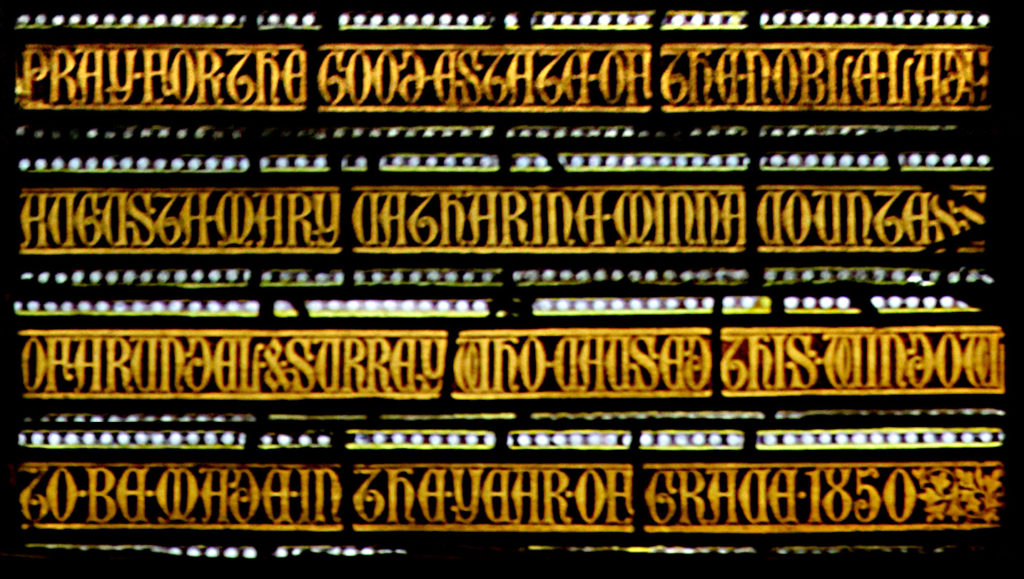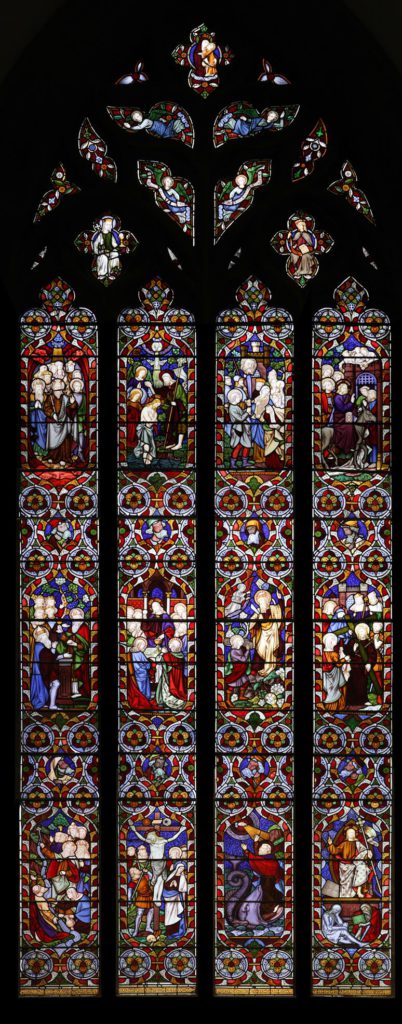
St Marie’s great West Window was designed by the renowned English architect, designer, artist and critic Augustus Welby Pugin and made by Hardman & Co, a company founded in 1838 that began making stained glass in 1844 and became one of the world’s leading manufacturers of stained glass and ecclesiastical fittings.

The Window was donated to the Cathedral for its opening in 1850 by Lady Augusta Mary Catherine Minna, the mother of the 15th Duke of Norfolk and Countess of Arundel and Surrey, to whom you will find a dedication at the bottom of the window.
The Window is what is known as a ‘Typological Window’ because it links events in the Old Testament – before the birth of Jesus Christ – to events in the New Testament, written after His birth.
Each Old Testament event is seen as a ‘type’ – a forerunner, or model for a New Testament event, fulfilled by Christ in his life.
The theory of Typology began in the Early Church, reached its height in the Catholic Church in the Middle Ages – from around 1000 CE to 1250 CE – and continued to be popular among Protestants after the Reformation in the 16th Century.
The main panels of St Marie’s West Window are arranged in pairs, with Old Testament events to the left of their New Testament fulfilment on the right.


